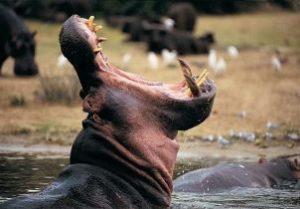
LAKE VICTORIA
Lake Victoria is the largest lake on the continent of Africa. It is also world’s largest tropical lake and the second largest fresh water lake after Superior in north America. The lake is not a very deep lake and is located in East Africa touching three countries. This countries are Kenya, Uganda and Tanzania. It is the source of river Nile, the longest in Africa and sometimes contested to be the longest in the world. Kenyan Luos call the Lake Nam Lolwe. Ugandans call it Nnalubaale. The lake was named after Queen Victoria by the explorer John Hanning Speke, the first Briton to document it in 1858. By size, lake Victoria has a surface area of 68,800 km2. Average depth is 40m with a maximum depth of 80m and lies 1,134 m above sea level.
The shore line is shared by the three countries at Kenya (6%), Uganda (43%), and Tanzania (51%). It is fed by river Kagera, Katonga, Sio, Yala, Nyando, Sondu Miriu, and Mara. Thousands of smaller streams also feed into the lake. River Nile carries water out of the lake. The lake is about 400 years old. It was formed when rivers flowing westward were blocked by up thrown crustal block. Studies show that Lake Victoria has dried three times since it was formed. Last drying was 17 300 years ago and refilled 14700 years ago. The lake receives 80% of its water through direct rainfall. About 70% of the water is again lost through evaporation. Around 28% flows away through river Nile.
Climate
The climate is tropical with annual mean maximum temperatures ranging from 24° to 27°C and mean minimum temperatures ranging from 15° to 18°C. Most of the region receives between 1,000 to 1,400 mm rainfall, but this can exceed 2,000 mm on the Sesse Islands in Lake Victoria. Rain mostly fall in two seasons, from March to May and August to November.
Vegetation and wildlife around lake Victoria
Natural vegetation of the lake basin consists of patches of closed evergreen forest along the western and northern shores with open landscapes and swamp wetlands. This makes the area around the lake suitable habitat for birds, crocodiles, and hippopotamus. Other wildlife include spotted-necked otter, marsh mongoose, sitatunga, bohor reedbuck African clawless otter, defassa waterbuck, cane rats, and giant otter shrew. Reptiles are include African helmeted turtles, variable mud turtles, and Williams’ mud turtle. Williams’ mud turtle is restricted to Lake Victoria and other lakes, rivers, and swamps in the upper Nile basin. As for fish, the lake has a huge variety with most of them endemic. It has the largest fish variety in the world only second to lake Malawi.
The major urban areas located on the lakeside are Mwanza, Bukoba, Musoma, Kampala, Jinja, Entebbe, Masaka, Kisumu, Homa Bay, and Kendu Bay. Kenyan wildlife sanctuaries located on the lake shores are Kisumu Impala Sanctuary and Ndere Island national park.



